Plan An Adventure Trip To Nepal’s Spectacular Natural Wonder Of Siddha Gufa In 2025
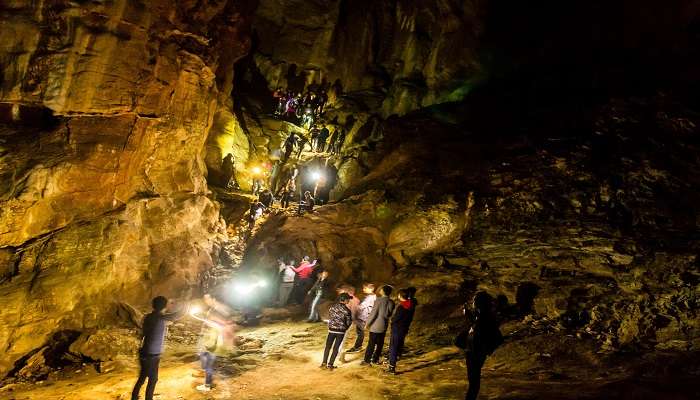
Nestled in the Tanahun district of Nepal, Siddha Gufa is a captivating nature wonder. Carved by the hands of time over thousands of years, this magnificent limestone formation boasts some of the most breathtaking rock formations known to man. The intricate underground pathways and tunnels are welcoming invitations for adventurous explorations. This hidden gem has stood for centuries but was discovered in 1983. Inside, you can find many idols of Lord Shiva within it, making it a spiritual sanctuary as well. The serene ambience has attracted many saints and hermits to seek solace and enlightenment through meditation.
History Of Siddha Gufa
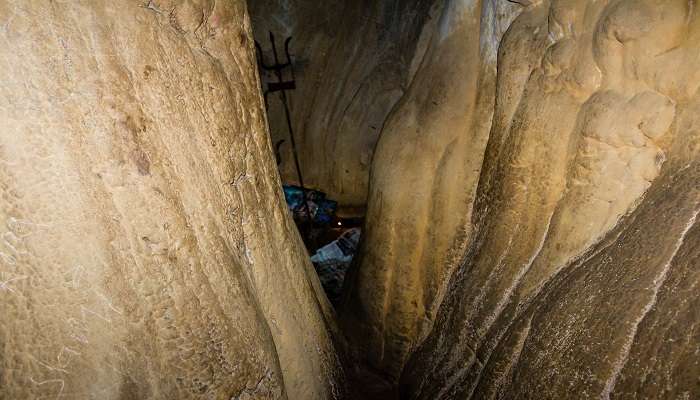
Discovered in 1988 by a group of hikers, Siddha Gufa Bandipur is as old as 3500 years. With its rich stalagmite and limestone formation, it was the ideal location for meditation. There are many stories about yogis and hermits who mediated and achieved salvation. The cave is closed, but sunlight makes its way through small openings, giving the stone formations a glowing look.
With a height of 50 metres and a depth of 430 metres, each turn in this cave is an exploration. It is the largest cave in Nepal and the second largest in Asia.
Also Read: Things To Do In Nepal
Siddha Gufa Highlights
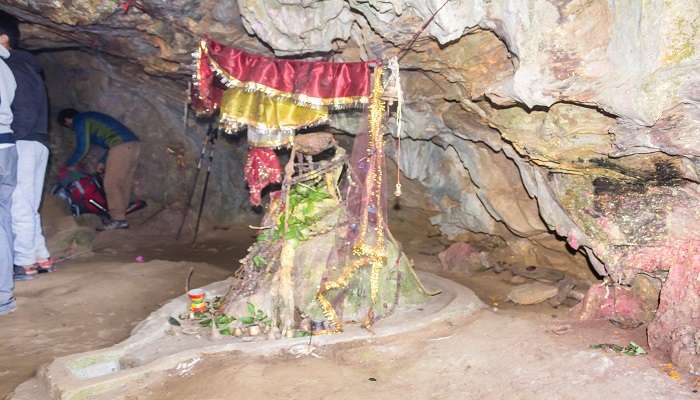
Being home to the various ecological species of insects and bats, Siddha Cave is an amazing place to add to your list. As you enter, the main entrance is huge and has stunning limestone formations. It echoes the sound of flowing water, which adds to the experience of this cave. As you go further, there are multiple hallways and passages, each with icicle-like formations shining with beauty. Also, there are many formations where you have to climb up and down the rocks. Some places have low oxygen levels, and you must use more strength to wander around. This is a great adventure to add to your memory.
As you go exploring, you will see some places with idols of Lord Shiva and Nagarjuna. During Mahashivratri, devotees come here to pay their tribute and seek blessings. Multiple formations look like faces, flowers, and patterns within the cave. During the monsoon season, some lakes flow outside, adding to the cave’s serenity. Exploring the stunning formations of stalagmites, stalactites, and limestone would offer a
unique experience, especially if you are a geology enthusiast.
Siddha Gufa Entry Fee And Visiting Hours
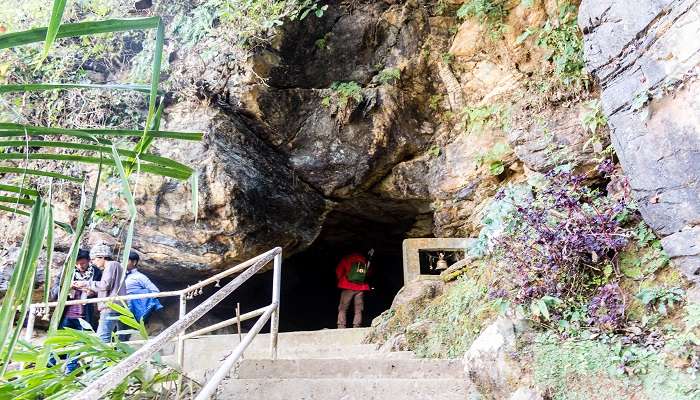
The entry fees collected go into the maintenance and cleanup of Siddha Gufa. You can explore this gem at a nominal fee. Here is a detailed list of entry fees for different tourists:
- Nepalese: NPR 100
- SAARC nationals: NPR 200
- Foreigners: NPR 500
You can visit the Siddha Gufa Bandipur daily from 10 AM to 7 PM. You can check in with the authorities before you reach. Wear dark-coloured clothes as it is possible to get some stains as you explore this natural cave.
Related Post: Trekking In Nepal
Things To Do Siddha Gufa Bandipur, Nepal
After completing a trip to Siddha Gufa, here are some more places you can visit. Enjoy the beauty of nature and explore your religious side in the temples of Nepal. Read on to choose the places to visit along with your Siddha Gufa trip.
1. Visit Thani Mai Temple for Majestic Vistas
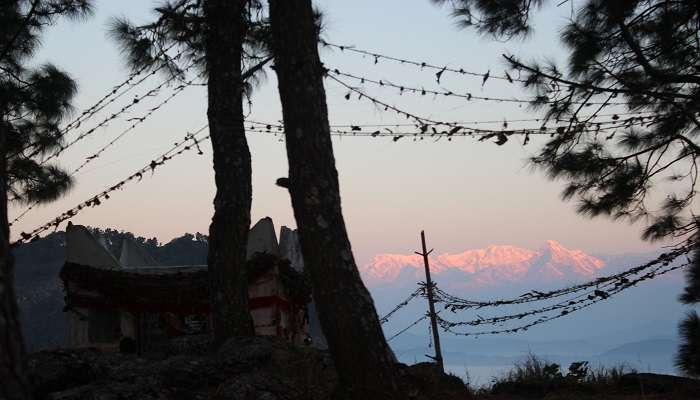
Located approx. 9 kilometres from Siddha Gufa, Thani Mai temple is at an ascent of 1000 metres above sea level. It is on a hill in Bandipur and offers breathtaking town views. You can go on a short hike of half an hour to reach the temple and enjoy the steep trail. The best time to visit this temple is during sunrise or sunset. Visiting at this time gives you a chance to admire the stunning views of the mountains of the Himalayan range. The temple has a distinct yet simple Nepalese architecture. With a tranquil atmosphere, you can enjoy moments of spirituality or sit with yourself amidst nature.
- Timings: 6 AM to 6 PM
- Entry fee: Free
- Ideal Duration: 1 to 2 hours
2. Experience the Spiritual Heritage of Bindhyabasini Temple
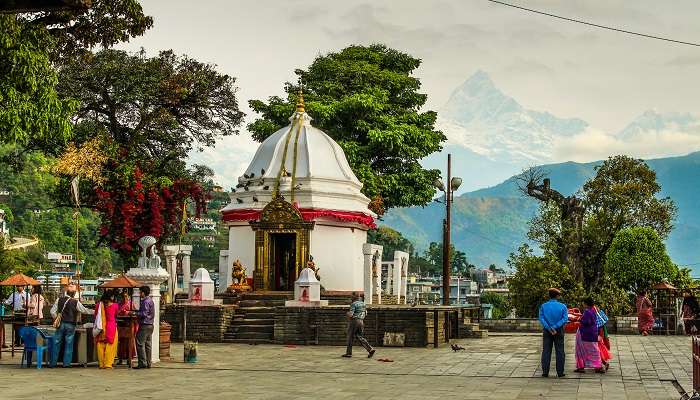
Located 3 km from Siddha Gufa, Bindhyabasini Temple is a revered temple in Pokhara. The temple was built in Newari style and has stood for a century, overlooking Bandipur. The temple has ornate designs and intricate woodwork, highlighting the craftsmanship of Nepal. The temple is the abode of Goddess Bindhyabasini, an incarnation of Goddess Durga. The temple has a spacious courtyard for occasions, religious processions and ceremonies. The temple has a vibrant atmosphere filled with devotees during the festival of Teej. You can admire the mountain ranges from the temple and meditate in the courtyard.
- Timings: 5 AM to 7 PM
- Entry fee: Free
- Ideal Duration: 1 to 2 hours
Related Post: Shopping In Kathmandu
3. Relax By The Serene Phewa Lake
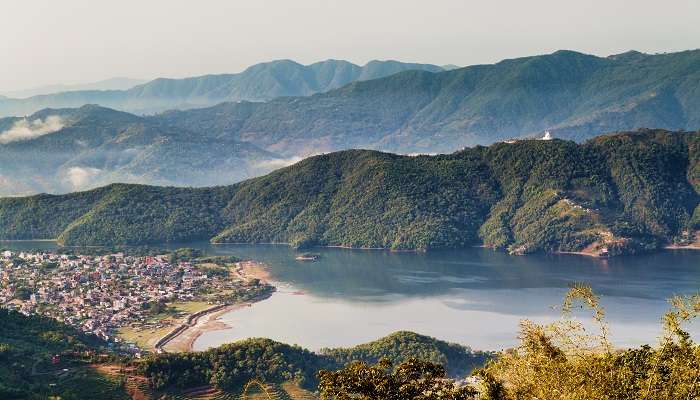
Located 55 km from Siddha Gufa, Phewa Lake is the second-largest lake in Nepal. It is spread over 4 square kilometres and offers amazing views. It shows the reflections of the Annapurna and Dhaulagiri ranges during sunrise and sunset. People come and visit this underrated gem to witness the beauty of nature. In the middle of the lake, a temple, Tal Barahi, stands on an island. It is a two-storied temple dedicated to the goddess Barahi. You can enjoy a good meal on the side of the lake, take a stroll or go on a boat to experience the scenic view of the Phewa lake.
- Timings: 9 AM to 5 PM
- Entry fee: Free
- Ideal Duration: 1 to 2 hours
4. Discover Wildlife Wonders At Chitwan National Park

Located 50 km from Siddha Gufa, Chitwan National Park is a UNESCO world heritage site. It was constructed in 1972 and spans a massive 952 square kilometre area. The park is instrumental in conservation efforts and has a rich ecosystem. It is situated on the Terai lowlands and houses over 700 species of animals. The park houses several endangered species, such as the one-horned rhinoceros, the Bengal tiger, and many others. It also has a bird sanctuary filled with exotic birds like a kingfisher, woodpecker, etc. You can enjoy a jeep safari or explore the sanctuary on an elephant. There are many guided tours in this forest as well.
- Timings: 9 AM to 5 PM
- Entry fee: Free
- Ideal Duration: 1 to 2 hours
Related Post: Villas In Kathmandu
5. Marvel At The Majestic Davis Falls

Located 52 km from Siddha Gufa, Davis Falls is an amazing phenomenon to see in person. The Phewa Lake feeds the fall, and its cascading waters pass through many tunnels and fall to vanish in a tunnel. The sudden disappearance of this heavy waterfall makes it a memorable experience. Follow all the guidelines to avoid any mishappenings in the waterfall area. Enjoy the beauty of the mountains and forests around this as you enjoy the mists of water from the waterfall. If you are seeking a nature getaway or want to relax and listen to the sounds of nature, Davis Fall is the perfect spot to visit.
- Timings: 9 AM to 5 PM
- Entry fee: Free
- Ideal Duration: 1 to 2 hours
You May Also Like To Read: Temples In Nepal
The delicate and vast formations of Siddha Gufa are a mesmerising view. Walking inside the cave and witnessing the rock formations is a once-in-a-lifetime experience. If this guide about Siddha Gufa motivates you, here are some of the best packages for a trip to Kathmandu. Explore the quaint village side of Bandipur and trek your way up to Siddha Gufa.
For our editorial codes of conduct and copyright disclaimer, please click here
Cover Image Credit:Meusays for wikimedia commons
Frequently Asked Questions About Siddha Gufa
How much time is required for a trip to Siddha Gufa?
Exploring the Gufa takes around 45 minutes to 1 hour. It is the ideal location for a half-day trip.
How to reach Siddha Gufa?
You can take a bus to reach Bimal Nagar and take the stairs up to the Siddha Gufa. You can also hike from Bandipur along the hiking trail already present. It would take around 50 minutes offering more adventurous journeys.
Do I need a guide to explore the Siddha Gufa?
If you are visiting with a group, a guide is not necessary. However, taking a guide helps you experience the place better.
Are there bats in the Siddha Gufa?
Yes, a few bats are hiding within the caves. They are not densely populated in this cave.
What should I carry while visiting Siddha Gufa?
While going on a trip to explore Siddha Gufa, you can carry headlamps for better views. Wear shoes as the trip is covered by walking mostly.
People Also Read:
Alfred Caves Arwah Cave Khambhalida Caves

With a passion for exploring and travelling to the roads long forgotten, experience the world through enthralling stories and adventures. Join me as I share my experiences at some of the world’s most popular tourist destinations and quench that pestering curiosity with something exciting!











